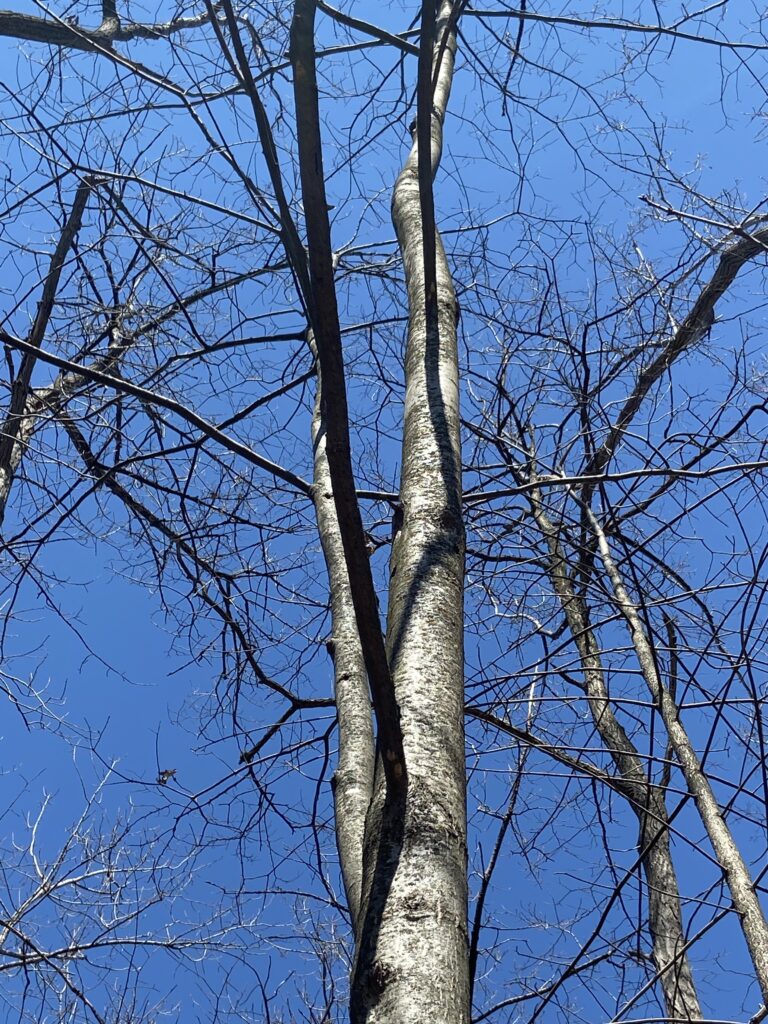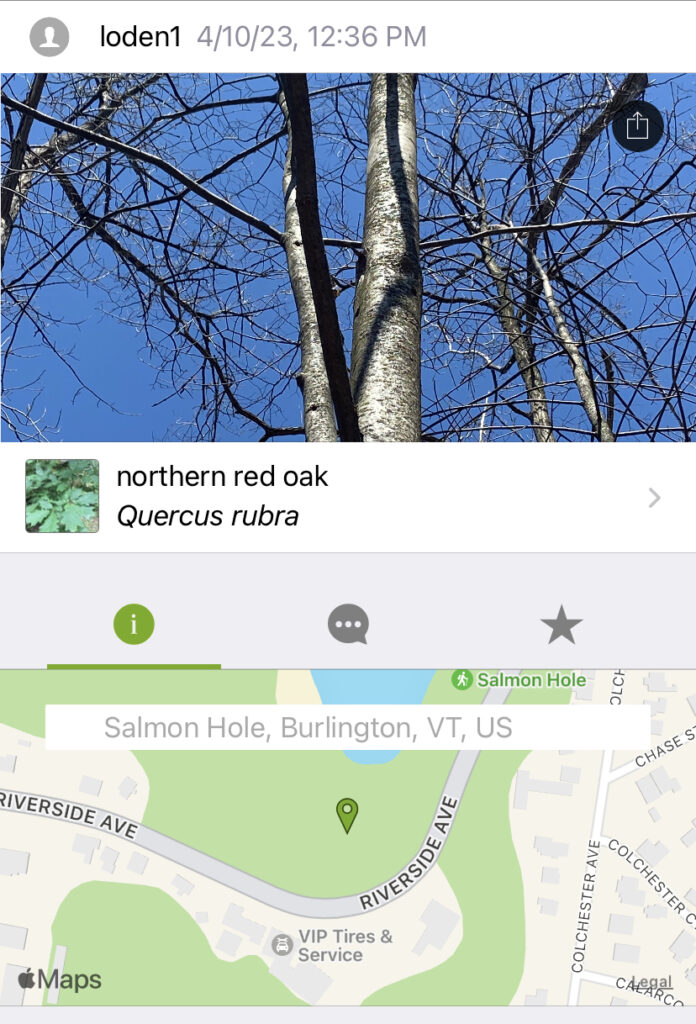Welcome to part tree!!! (hehehe)
Anyway, this beautiful sunny April day still yielded approximately zero observable buds on my red oak, much to my disappointment. Shouldering this tragedy, I took some pictures of the tiny, fuzzy buds that I could just make out on my tree’s twigs. Once again, the lack of snow at the base of the trees has prohibited me from reaching the buds to get a closer look at them, and I fear my tree-climbing skills would not be quite sufficient.

Talking with Taylor during lab last week, we were discussing the budding times of different species in different areas. I said that I had been to Salmon Hole, where none of the trees were budding, and was curious why the trees on the Winooski floodplain were budding very visibly. After the presentation at the Rubenstein School by Sara Kuebbing from the Yale School of the Environment, Taylor suggested that, in accordance with Kuebbing’s research, the trees budding significantly earlier in Winooski were invasives, versus the natives at Salmon Hole. In a 2020 paper, Kuebbing and others found that invasive species in the Northeast are more likely to bud and flower earlier (by 2-3 weeks) than native plants, resulting in a disruption in their phenological niche. In many natural communities, this results in an ecological invasion of non-native species.

✌️